Discuss treatment goals and alternatives to the use of opiates so that opiate use is limited. Addiction to CNS depressants may see a person experience social and family problems, difficulty working, and an inability to function in daily. A person may recover from an overdose, but research in the Journal of Clinical Psychopharmacology shows that some may continue to have problems with everyday functioning after leaving the hospital.
If you are on CNS depressants and suspect it’s making you more lethargic than you should be, don’t stop it until you speak to your doctor. Suddenly stopping the medication could result in more harm than good. However, if you find that your CNS depressants affect your daily functioning, speak to your doctor about it. They’ll decide if you need to be taken off the medication, switched to another form of the medication, or if your dosage needs to be adjusted. In certain cases, CNS depression could also be caused by a stroke, brain trauma, an aneurysm, or a tumor.
1. The Effects of Benzodiazepine on Cognition
These drugs can generate a sense of euphoria and relaxation even when taken in small doses, which encourages abuse in some. Barbiturates have also shown to have a dramatic impact on sleep patterns, resulting in suppressed REM sleep. In response to particularly high abuse rates from the 1950s to the 1970s, what foods have alcohol in them benzodiazepines, which are generally regarded as less addictive and less likely to cause overdose, were developed and popularized.
This was compared to a gradual taper without the other components of the treatment plan [72]. There was no difference in the success rate of BZD discontinuation between the control and experimental groups in this case [72]. celebrities who drink every night Researchers investigating the correlation between anxiolytic and hypnotic drugs with mortality hazards examined over 100,000 patients in a retrospective cohort study. They found that the hazard of death was doubled in patients prescribed BZD compared to control patients [47]. There was an association between the prescription of anxiolytic drugs and mortality, resulting in 4 excess deaths in the anxiolytic drug group within an average of 7.6 years [47]. The relationship between hypnotics and cancer was expanded upon by Kripke et al.
Alcohol
CNS depressants are medications and other substances that slow down the CNS. A person may benefit from taking the correct dose of a CNS depressant, such as an opioid pain relief medication. A drug called flumazenil can reverse the serious effects of benzodiazepines. When choosing an antidepressant, your doctor takes into account your symptoms, any health problems, other medications you take and what has worked for you in the past. Most antidepressants are generally safe, but the FDA requires that all antidepressants carry black box warnings, the strictest warnings for prescriptions. In some cases, children, teenagers and young adults under 25 may have an increase in suicidal thoughts or behavior when taking antidepressants, especially in the first few weeks after starting or when the dose is changed.
1. Factors Influencing Withdrawal Symptoms
These medications are prescribed in highwatch online meetings the form of a pill, capsule, or liquid that you take orally. They work by increasing your brain’s production of a chemical called gamma-aminobutyric acid (GABA). Typically, it may take several weeks or longer before an antidepressant is fully effective and for initial side effects to ease up. Your doctor may recommend some dose adjustments or different antidepressants, but with patience, you and your doctor can find a medication that works well for you.
- One study showed that administration of BZD in patients with Alzheimer’s disease do not lead to further cognitive decline after 18 months of taking the drug [74].
- Mixing CNS depressants, opioids, and alcohol increases their effect.
- These are chemically different from other CNS depressants, but they work by stimulating the same inhibitory neurotransmitter, GABA.
- High doses of shorter-acting benzodiazepines induce anterograde amnesia, which may be helpful for surgical and procedural anesthesia to reduce patient recall.
- Studies have shown that treatment for longer periods with high-dosage, short-acting BZD contribute to more severe withdrawal effects [61].
- These patients are more likely to die from methadone toxicity because of the synergistic effects of methadone and BZD [68].
This study found that patients undergoing this structured intervention were 5-fold more likely to successfully discontinue BZD than those who just tapered off the drug [73]. Interestingly, a lower prevalence of withdrawal symptoms was noted in the experimental group without any change in pharmacologic treatment from control group [73]. However, this study included a small sample size, so a larger study using this standardized counseling method would increase the validity of the results of this study [73]. More studies will need to be carried out on the non-pharmacologic treatment of BZD withdrawal, as it is showing some promise for the successful discontinuation of the drugs. The beta-blocker propranolol has shown mixed results when it comes to treating BZD withdrawal and dependence. One study found that propranolol attenuated some withdrawal symptoms in patients who stopped taking either diazepam (a long-acting BZD) and those who took lorazepam (a short-acting one) abruptly [69].
One potential candidate for treatment of withdrawal symptoms in these patients is gabapentin, which works similarly to the neurotransmitter GABA [68]. However, one study showed no significant difference in BZD use in MMT patients between gabapentin and placebo [68]. However, this study was limited by a small sample size, so further randomized clinical trials need to be conducted to assess the efficacy of gabapentin treatment in BZD -dependent MMT patients [68]. Further studies need to be performed on not just gabapentin, but other medications for MMT patients with BZD dependence should be evaluated since treating them is more complicated.
As a recreational drug, people sometimes call them barbs, downers, or phennies, among other names. People with any of these conditions should check with a doctor before using a CNS depressant. When you first begin taking a CNS depressant, you may feel unusually sleepy or uncoordinated as your body adjusts to the medication. If someone’s heart stops beating, immediate CPR will be necessary to save their life.
However, in the same study, 27–45% of patients experienced withdrawal symptoms even while taking propranolol [69]. The control group and the experimental group had the same dropout rate in this study [69]. Another study found that abrupt discontinuation and daily administration of propranolol in severely dependent patients was not a more successful treatment plan than current practice [65]. Additionally, in this study, approximately 80% of patients experience withdrawal symptoms, which is much greater than the rate in other studies [65]. The authors attribute this to the severity of patients’ dependence on BZD before treatment with propranolol [65]. More studies need to be performed on treating withdrawal with propranolol, including testing it as a potential adjunct to tapering off both long-acting and short-acting BZD.
Treatment
Different classes of CNS depressants work in different ways, but all have the ability to reduce activity in the central nervous system and lower levels of awareness in the brain. While CNS depressants all share this ability, there are significant differences among substances within this drug class. In particular, some are generally considered to be safer and are prescribed more than others. However, it’s important to note that almost all depressants have the potential to be addictive and should only be used as prescribed. Central nervous system depressants are sometimes called sedatives or tranquilizers, although those terms are more properly applied to specific categories of CNS depressants.
CNS depression is prevalent among people who use these substances recreationally. Overdosing on quinazolinone sometimes causes effects that are the opposite of quinazolinone-like sedation. The overdose consists of hyperreflexia, vomiting, kidney failure, delirium, hypertonia, coma, myoclonic twitches, somnolence, euphoria, muscular hyperactivity, agitated delirium, tachycardia, and tonic-clonic seizures.
SSRIs may also be used to treat conditions other than depression, such as anxiety disorders. If it is a result of the misuse of CNS depressants, certain medications are prescribed. These substances are referred to as CNS depressants because they affect the activity of your CNS. Before a diagnosis of CNS depression can be made, your doctor will need to examine your medical history and conduct a series of tests. If you have recently been prescribed CNS depressants or misused any CNS depressants, this will be the most likely culprit. People using central nervous system depressants might sometimes experience mild depression as a side effect.
Contrary to popular misconception, opioids are not depressants in the classical sense.[4] They do produce central nervous system depression, but they also excite certain areas of the central nervous system. To remain true to the term “depressant”, opioids cannot be classified as such. For opioid agonists and opium derivatives, these are classified differently. These drugs are more correctly identified as “analgesic” or “narcotic”. In contrast, stimulants, or “uppers”, increase mental alertness, making stimulants the opposite drug class from depressants. Antidepressants are defined by their effect on mood, not on general brain activity, so they form an orthogonal category of drugs.
There are pharmacological options for treatment in those suffering from withdrawal or wishing to discontinue their chronic BZD use. Each of these studies received mixed results, with no statistically significant advantage to BZD therapy. The current treatment of choice is to switch the current short-acting BZD for a long-acting alternative then gradually taper the dose to wean the individual off BZD completely [8]. Clonazepam has been used in the outpatient setting as a medication for taping the use of BZD. However, no set schedule for a taper has been validated in the current literature.

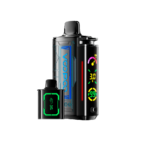 VOOPOO MAX 16K PUFF
VOOPOO MAX 16K PUFF VOOPOO CLOUD X 20K PUFF
VOOPOO CLOUD X 20K PUFF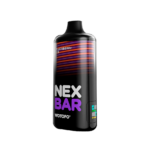 NEXBAR 18K PUFF
NEXBAR 18K PUFF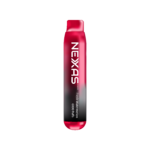 Nexas 6000 puff
Nexas 6000 puff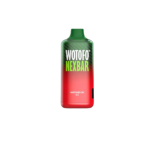 WOTOFO 10K Puff
WOTOFO 10K Puff WAVE 8K PUFF
WAVE 8K PUFF WAVE 10K PUFF
WAVE 10K PUFF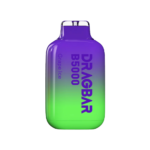 DragBar Zoovoo 5000 Puff
DragBar Zoovoo 5000 Puff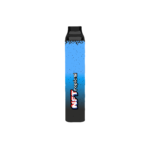 NFTropical Cubo 2500 Puff
NFTropical Cubo 2500 Puff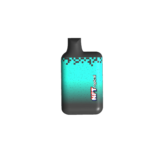 NFTropical E Box 5500 Puff
NFTropical E Box 5500 Puff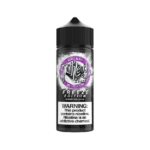 RUTHLESS
RUTHLESS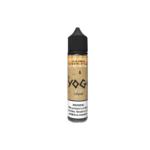 YOGI
YOGI PACHA SYN
PACHA SYN VGOD
VGOD KILO
KILO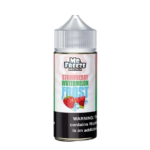 Mr Freeze
Mr Freeze TWIST
TWIST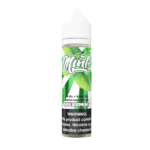 MINTS
MINTS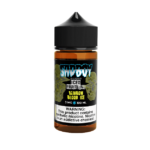 SADBOY
SADBOY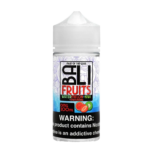 KING CREST
KING CREST GOMITAS CBD
GOMITAS CBD GOTERO
GOTERO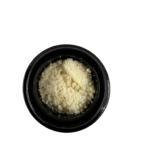 POLVO ATC
POLVO ATC